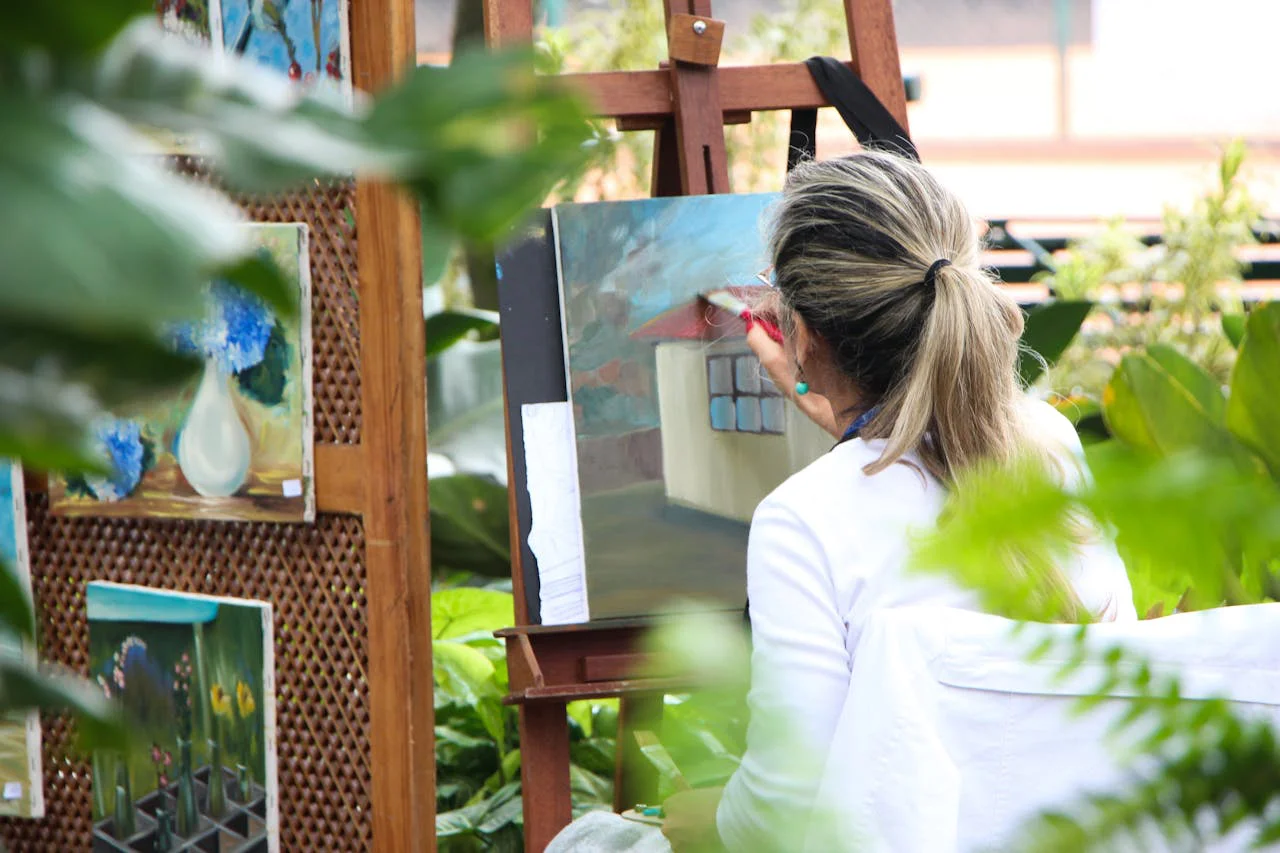Özge Fennibilek Academy Painting Education
Art education focuses on technical issues such as drawing skills, composition, shading and perspective, while also encouraging artistic expression and creativity. Students gain experience in techniques such as pastel, watercolor and acrylic by working with different materials. The Academy contributes to both personal and artistic development by deepening students' interest in art. At the same time, organized exhibitions and artistic events provide students with the opportunity to share their works and increase their self-confidence.
Fundamentals of Art Education
The foundations of art education begin with teaching individuals basic information and techniques to develop their artistic skills and increase their creative thinking capacity. These foundations help a person learning to paint both strengthen their technical skills and create their artistic vision. Here are the main basic elements of art education:
1. Drawing and Outline:
Drawing skill lies at the core of painting. Drawing involves determining the shapes and outlines of objects. The correct use of line thickness, outlines and lines form the basic structure of the painting. Students learn to draw more complex objects starting with basic geometric shapes.
2. Color Theory:
Color theory is an important part of art education. Understanding the relationships between colors, warm-cold color balance, contrast, and color tones is the basis for creating a successful composition. Students learn basic concepts such as the color wheel, primary and secondary colors.
3. Composition:
Composition is the arrangement of objects in a picture and the creation of a harmonious whole. Students learn how to direct the perspective and how to control eye movement. Elements such as balance, symmetry, and perspective are also important in composition.
4. Perspective:
Perspective is a technique used to create a sense of depth and distance on a two-dimensional surface. Perspective studies, one of the foundations of art education, include basic rules regarding the correct sizing and placement of objects. Single-point and multi-point perspective drawing techniques are taught.
5. Shading and Light:
Shading shows how light is used to emphasize the form and volume of an object. Effective use of light and shadow adds depth and realism to paintings. Students learn to understand light sources and place shadows correctly.
6. Materials and Techniques:
The basics of art education also include recognizing different materials and techniques. Experience working with various materials such as pencil, charcoal, pastel, watercolor, acrylic and oil paint is gained. Each material has its own application technique, and students learn which material will work best in which situations.
These basic elements form the building blocks of art education and help individuals both develop their technical skills and gain freedom of artistic expression.
Art Education for Children
Art education includes topics such as basic drawing techniques, color theory and composition, and is structured in a way that suits the age and level of children. Through fun and creative projects, children gain experience with different materials (pastel, watercolor, acrylic, etc.) and develop their artistic skills. In addition, this education process contributes to children's personal development such as attention, patience and self-confidence. Özge Fennibilek Academy offers an environment that inspires children to embark on an artistic journey.
Art Education for Adults
During the art education, creative works are carried out using different techniques and materials. Students explore both traditional and modern art techniques using materials such as pastel, watercolor, and acrylic. Özge Fennibilek Academy offers adults interested in art the opportunity to relieve stress, think creatively and support their personal development. In addition, exhibitions and artistic events organized throughout the education process allow students to exhibit their works and share their artistic journeys.


